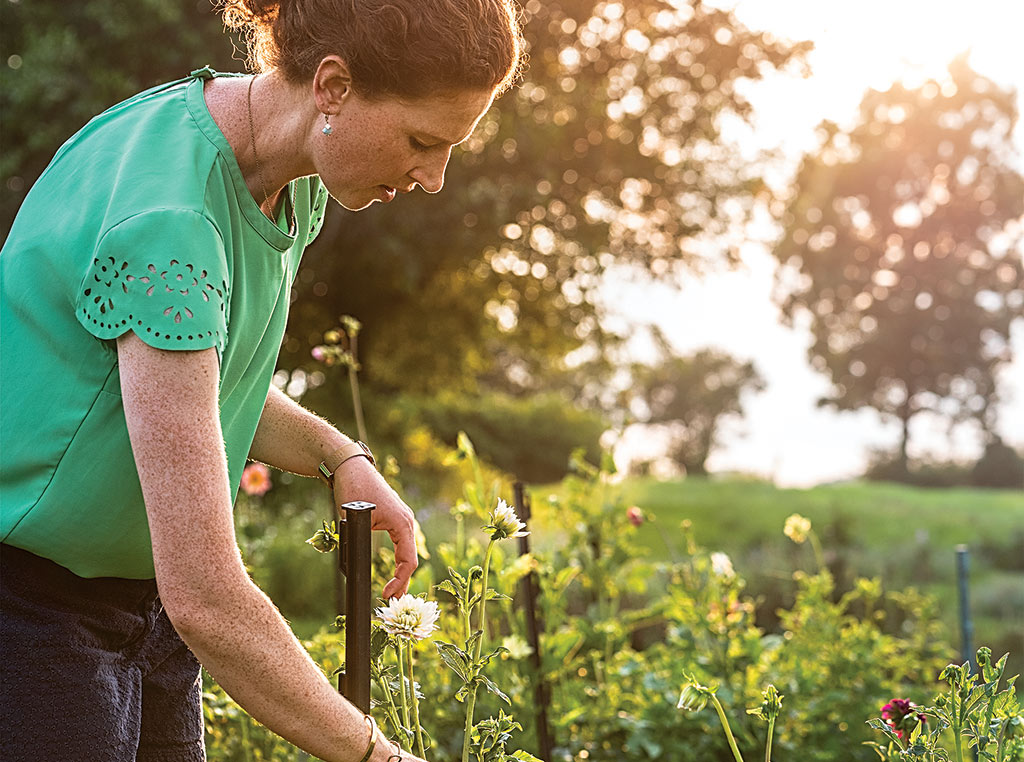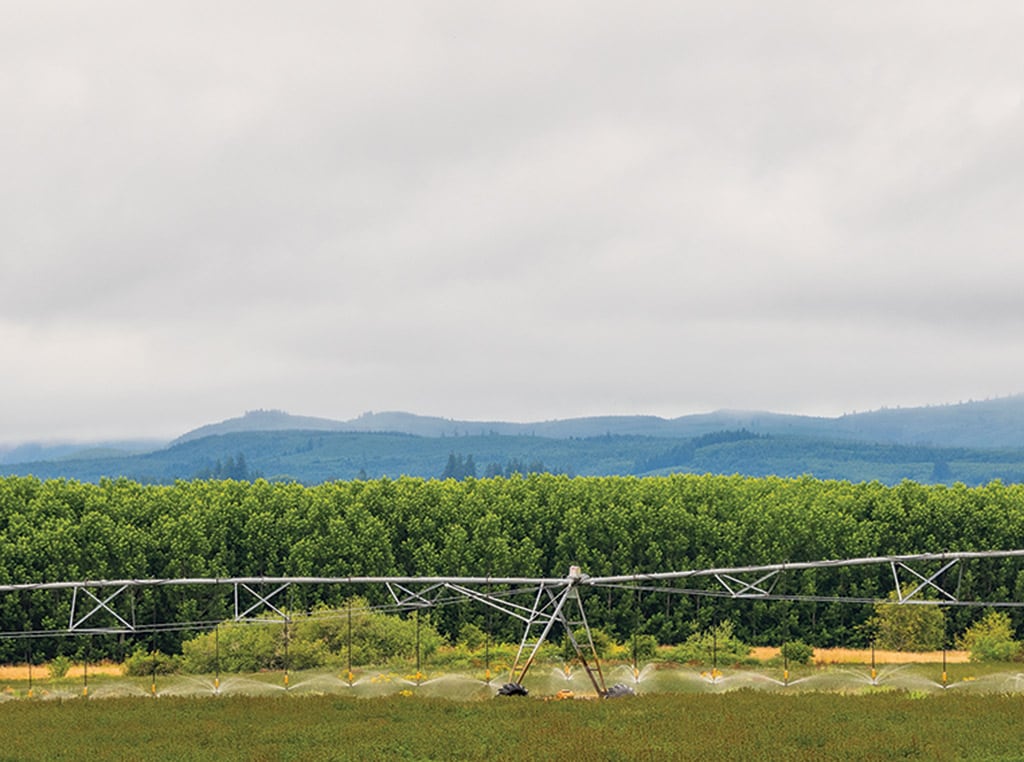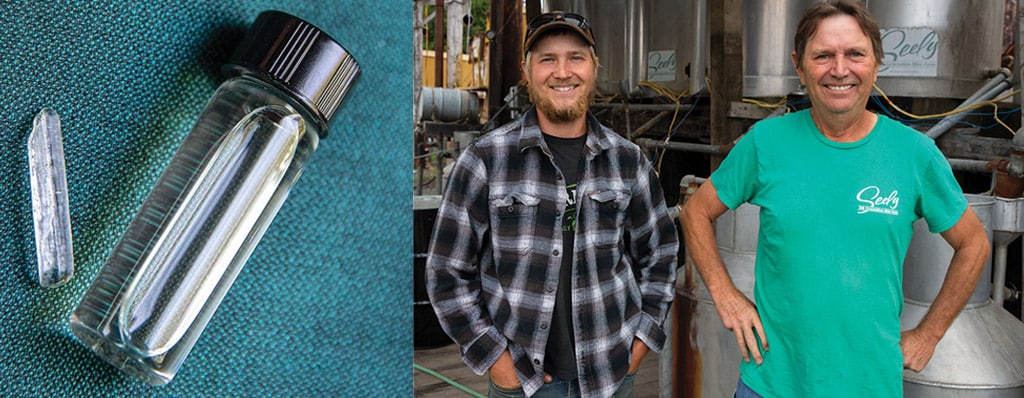Specialty/Niche December 01, 2021
Candyland
Seely family keeps generations-old farm minty fresh.
The Christmas season is flavored with candy canes and peppermint, tidings of wintry joy and fresh starts. Mike Seely and his son Warren help flavor the season with peppermint and spearmint oil that they harvest and distill from much of the 900 acres they farm near Clatskanie, Oregon.
Warren is the fourth generation of Seelys to grow mint in the foggy Lower Columbia region of the Northwest. The family has weathered price crashes and the emergence of mint production in the Willamette Valley to the south, eastern Oregon and Washington, and the sagelands of Idaho, not to mention competition from cornmint, a cousin of peppermint grown widely in India.
But today, the pressure comes not just from other mint growers. It’s L-menthol, modified from citrus oil, corn oil, or lemongrass. Growers are facing something similar to what cotton farmers grappled with when polyester stormed into the fashion market. You can hear the frustration in Mike Seely’s voice when he talks about L-menthol. But you can also hear the pride in his product. The Seelys are making their stand on quality, backed up by production efficiency that taps Warren’s extraordinary talents in mechanics, engineering, and app-building.
Sense of place. Mike Seely says Clatskanie, Oregon, may be the best place in America to produce mint oil. Period. That’s because the peat soils and climate near the mouth of the Columbia River are almost identical to peppermint’s breeding grounds in Mitcham, England. There, the Romans introduced spearmint to the edge of their empire, where it crossed with wild local watermint to create peppermint.
“You’re looking at sunlight, you’re looking at organic matter, you’re looking at how it’s farmed, when it’s harvested, like you would chocolate or wine,” he points out. “So a Napa wine is different from a Willamette Valley wine is completely different from a Yakima wine, right? That’s the same way with mint oil.”
Every decision the Seelys make affects the taste and color of their oil: the day they begin harvest (2 to 4 percent bloom in peppermint, full bloom in spearmint); how long the windrowed plants are left to dry in the field; the temperature and pressure of the steam they pump through the cut mint hay to distill out the oil.
Peppermint oil has 202 flavor, aroma, and color components, and spearmint has about 26. That’s what’s so frustrating to the Seelys about industrial L-menthol, which is just one of those flavor components.
A drop of their mint oil is fresh, cool, a little floral, maybe something vegetative way in the background, like driving past a hay field. A tiny bite of commercial L-menthol crystal binds to the same cold receptors in your mouth as natural mint, but with the hard slam of horseradish, an assault on the sinuses. The L-menthol feels like supercharged mint, and it tastes kind of like mint, but with no finesse. It’s like comparing a fine glass of wine with a 50/50 mix of grape juice and vodka.
Showcase. The Seelys can tell their mint oil from other growers’ by its aroma. So can industry buyers. They’re betting shoppers want that distinctive quality and the comfort of conscientiousness.
“There will always be a market for ‘cheaper is better,’” Mike acknowledges. “But there’s a huge movement now where people are starting to become more conscious of where their products come from, what’s in their products, and traceability.”
In short, they want quality straight from the farm. The Seelys have proved they can deliver. In 2007, when mint prices crashed and Mike Seely set up a table at the Portland Farmers Market to try retailing mint oil and mint tea. To demonstrate how to use mint oil, they sampled peppermint patties, which were a surprise hit—and a lifeline for the farm.
Today, the Seelys produce a line of peppermint patties, chocolates, and candy canes just a few yards from the distillery tanks.
Mint oil is so concentrated that the Seelys’ candy business uses less than a gallon per year. But it’s put them in Whole Food stores and high-end grocery co-ops nationwide, and created a path to consumers through seelymint.com.
It’s also the perfect calling card from dedicated mint growers. “We’re all about building long-term relationships,” says Warren. “We’re not in it just to hammer down and make a buck. This is our livelihood for the long haul.” ‡
Read More

SPECIALTY/NICHE
Blossoms are Booming
Flower farming sprouts new love for the land.

RURAL LIVING
Christmas Then and Now
Holiday traditions aren’t quite as timeless as we think.


